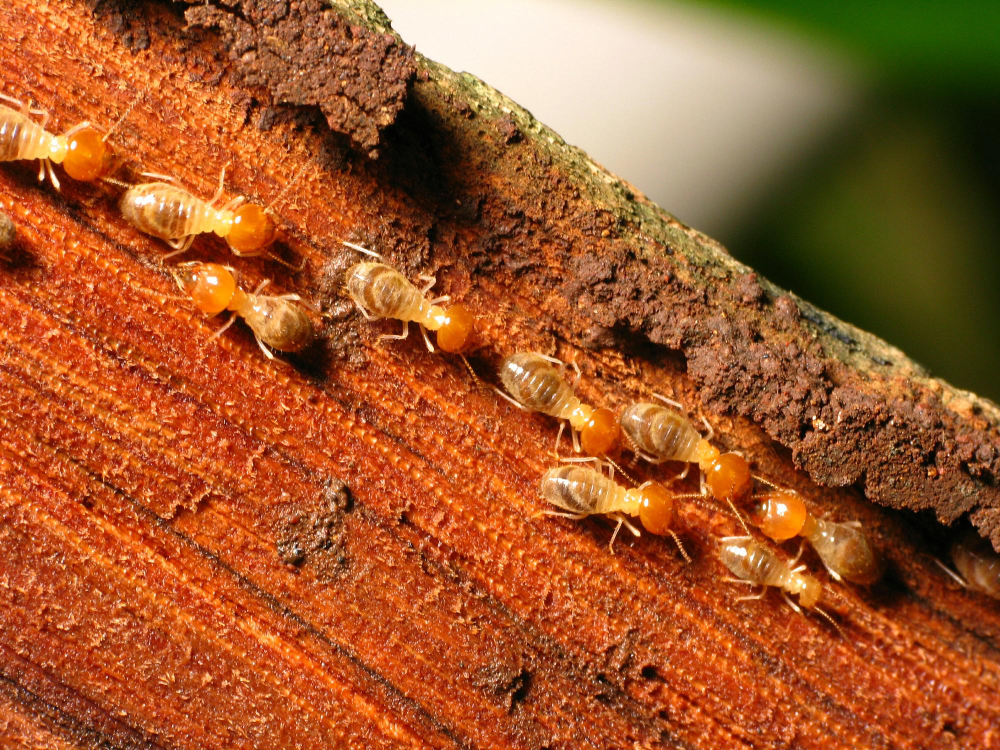Facts About Drywood Termites That Will Blow Your Mind
- May 22, 2024

Drywood termites are known for their ability to cause property damage without being easily found. They differ from subterranean termites in several characteristics. Drywood termite treatments are specifically designed for this species of termites keeping their distinct characteristics in mind. Here are some fascinating facts that you should know about these termites.
1. Stealth Tactics
Drywood termites are quite hard to locate since they live inside the wood they consume. Even with huge colonies of 2500 members, they munch away the wood without getting noticed until significant damage is done.
Unlike subterranean termites, they do not need to maintain contact with the soil and hence don’t leave behind trails of mud tubes.
Often, the first signs of a drywood termite infestation are the tiny pellets of frass that the termites push out of the wood they reside in. If you notice tiny piles of sawdust-like material, call a termite inspector immediately.
2. The Anatomy
Though it might be quite rare to spot drywood termites, knowing how they look can help you. Drywood termites are typically about ¼ to 3/8 inches long and their coloration varies from light brown to tan. Their powerful mandible helps them chew on the wood.
3. Colony Structure
The drywood termite colony has a king and a queen and both can live up to 10 years. The queen lays eggs and the offspring become workers or soldiers. When the colony matures, alates (winged reproductive termites) are produced. They swarm to nearby places during the warmer months to establish new colonies. Once they find an ideal place, they shed their wings and start a new colony.
4. Vulnerable Spots
Drywood termites can enter your house through cracks as small as 1/32 of an inch. Usually, drywood termites are fond of attics, window frames, wooden furniture, and door frames.
If you notice signs like heaps of frass, discarded wings near light fixtures, or tiny holes on wooden surfaces, then schedule a termite inspection immediately.
Drywood termites are common in coastal areas and in Southern states that have warm climates.
5. Architectural Acumen
Drywood termites create highly structured galleries within the wood they infest. These galleries are designed for maximum efficiency keeping in mind feeding and movement. The termites tend to extract moisture from the wood they eat, making it possible for them to survive even in extremely dry conditions.
Prevention of Drywood Termites
Despite their small size, a single drywood termite colony can consume about a foot of 2×4 wood in just five months. Here are some tips to protect your home from these relentless invaders.
- Seal Points of Entry: Make sure that all the cracks and crevices in your property’s exterior are sealed properly to prevent entry of termites.
- Regular Inspection: Regular termite inspections can help identify the infestation at the early stages thus making it easier to eliminate the termite colony.
- Preventive Measures: Termiticide-treated wood can repel the termites and prevent infestations.
HiTech Termite Control
Drywood termites are small but their destructive impact is mighty. If you want to eliminate drywood termites from your property, then HiTech Termite Control is the right choice. We provide all types of termite treatment in the Bay Area for both small-scale and large-scale infestations. Book a free inspection today by visiting our site here.
Frequently Asked Questions
1. What makes drywood termites hard to locate?
Drywood termites live inside the wood they consume, leaving no visible trails. They are often only noticed when significant damage is done or when tiny pellets of frass (sawdust-like material) are found.
2. What do drywood termites look like?
Drywood termites are about ¼ to 3/8 inches long and vary in color from light brown to tan. They have powerful mandibles for chewing wood.
3. How is a drywood termite colony structured?
A drywood termite colony includes a king and queen, who can live up to 10 years. The queen lays eggs, which become workers or soldiers. Winged reproductive termites (alates) are produced when the colony matures and swarm to establish new colonies.
4. Where are drywood termites commonly found in a house?
Drywood termites can enter through cracks as small as 1/32 of an inch and are commonly found in attics, window frames, wooden furniture, and door frames. They are prevalent in coastal areas and warm Southern states.
5. How do drywood termites create their nests?
Drywood termites create structured galleries within the wood they infest, designed for efficient feeding and movement. They extract moisture from the wood, allowing them to survive in dry conditions.
6. What are some tips to prevent drywood termite infestations?
Seal all cracks and crevices in your property, conduct regular termite inspections, and use termiticide-treated wood to repel termites and prevent infestations.





